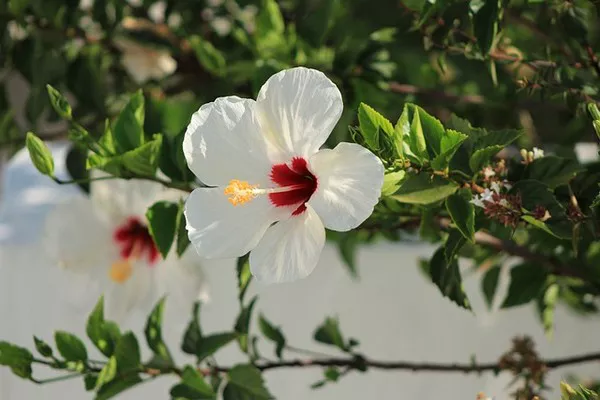For centuries, flowers have been admired and cherished for their beauty, fragrance, and ability to brighten any space. However, for cat owners, the safety of their feline companions is of paramount importance. Cats are curious creatures that often explore their surroundings, including plants, and may inadvertently ingest or come into contact with toxic substances. To maintain a safe and harmonious home environment, it is crucial to understand which flowers are safe for cats. This comprehensive guide provides valuable insights into cat-safe flowers, allowing pet owners to enjoy a beautiful floral display without compromising their feline friend’s health.
Understanding the Risks
Before delving into the world of cat-safe flowers, it is essential to grasp the potential dangers associated with certain plants. Many common flowers contain toxic compounds that can harm cats if ingested or even if they come into contact with the plant’s sap or leaves. Symptoms of poisoning in cats may include gastrointestinal issues, skin irritation, respiratory distress, and in severe cases, organ failure or even death. As a responsible pet owner, it is crucial to identify and eliminate any hazardous flowers or plants from your home and garden.
Cat-Safe Flowers: A Plethora of Pet-Friendly Options
Roses (Rosa spp.)
Roses, the symbol of love and beauty, are fortunately non-toxic to cats. Their petals and leaves are harmless, making them an excellent choice for floral arrangements or garden borders. However, it’s crucial to avoid using pesticides or fertilizers on the roses, as these chemicals can be harmful if ingested by cats.
Sunflowers (Helianthus spp.)
The vibrant and cheerful sunflowers add a touch of radiance to any space. The good news is that these beloved flowers are safe for cats as well. Their large, soft petals pose no harm to feline companions, making them a safe and joyful addition to your home.
Orchids (Orchidaceae)
Orchids are not only elegant and sophisticated but also non-toxic to cats. These exotic blooms can thrive indoors with proper care and provide a touch of exotic beauty without endangering your furry friend.
Snapdragons (Antirrhinum majus)
Snapdragons’ unique blooms that resemble tiny dragon mouths are safe for cats. They add a playful and colorful element to gardens and floral arrangements, making them an attractive choice for cat owners.
Petunias (Petunia spp.)
Petunias, with their wide array of colors and patterns, are a popular choice for gardens and hanging baskets. Luckily, they are safe for cats, ensuring that your furry companion can explore the outdoors without any health risks.
African Violets (Saintpaulia)
African violets are beloved for their delicate and charming flowers, which come in various shades of purple, pink, and white. These gentle blooms are entirely non-toxic to cats, making them a wonderful addition to any indoor garden.
Marigolds (Tagetes spp.)
Marigolds’ vibrant hues and pest-repellent properties make them a favorite choice for many gardeners. The good news for cat owners is that these cheerful flowers are safe for feline friends, allowing you to brighten up your garden without worry.
Zinnias (Zinnia elegans)
Zinnias are easy-to-grow flowers that come in a wide spectrum of colors. Fortunately, they are non-toxic to cats, making them a fantastic choice for both indoor and outdoor floral arrangements.
Impatiens (Impatiens walleriana)
Impatiens, commonly known as “busy lizzies,” are shade-loving flowers that bloom abundantly throughout the summer. These pet-friendly flowers allow cat owners to create stunning and safe displays in shady spots.
Calendula (Calendula officinalis)
Calendula, or pot marigold, is well-regarded for its medicinal properties and vibrant orange and yellow flowers. The good news for cat owners is that these flowers are non-toxic to felines, allowing them to be incorporated into gardens or used in skincare products without concern.
Precautions to Ensure Cat Safety
While it’s reassuring to have a list of cat-safe flowers, responsible pet ownership goes beyond just choosing safe plants. To ensure your feline friend’s safety, consider the following precautions:
Research: Always verify the safety of a flower or plant before bringing it into your home or garden. Use reliable sources or consult with a veterinarian if you’re unsure about a particular plant’s toxicity.
Placement: When creating floral arrangements or tending to your garden, place flowers in areas inaccessible to your cat. Cats are naturally curious, and keeping the flowers out of their reach will prevent accidental ingestion.
Eliminate Toxic Plants: Identify and remove any toxic plants from your home and garden. Common toxic flowers include lilies, tulips, daffodils, and lily of the valley. If you suspect your cat has ingested a toxic plant, seek immediate veterinary attention.
Supervise Outdoor Time: When allowing your cat outside, supervise their activities to ensure they do not nibble on unfamiliar plants or flowers. Keep your garden free of any hazardous plants to create a safe space for your pet to explore.
Conclusion
Incorporating cat-safe flowers into your home and garden not only enhances the aesthetic appeal but also ensures the well-being of your beloved feline companion. The joy of flowers need not be compromised by safety concerns when armed with the knowledge of which blooms are safe for cats. Remember to do your research, take necessary precautions, and enjoy the beauty of flowers alongside your happy and healthy feline friend. By making informed choices, you can create a delightful and pet-friendly environment that fosters harmony and happiness for all.


